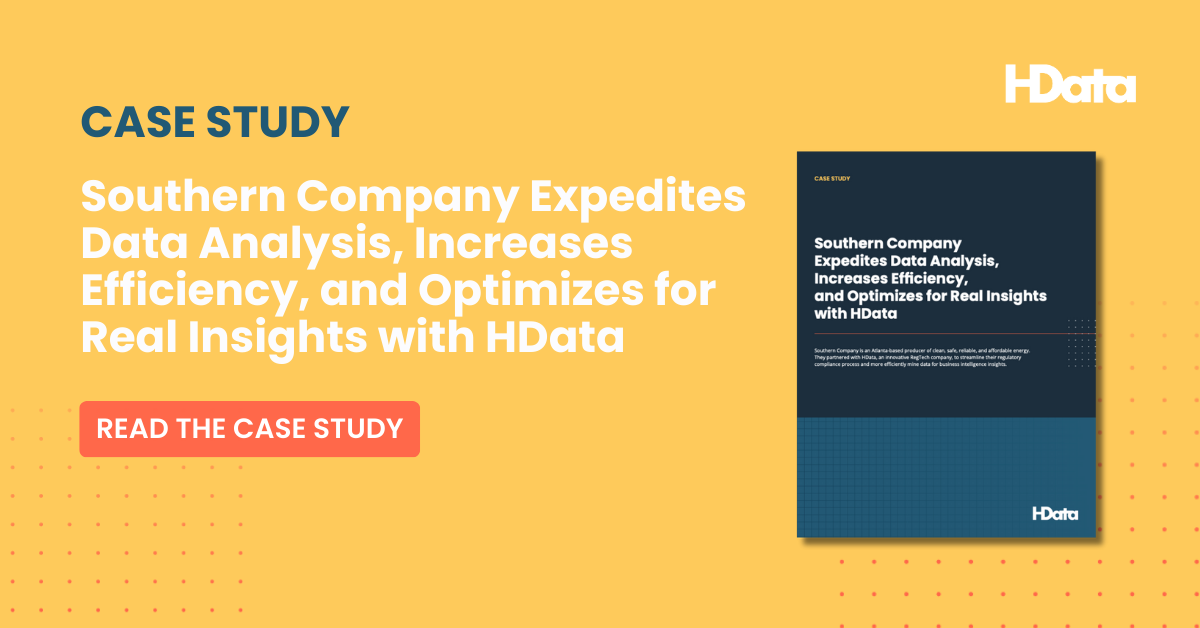A very interesting thing is happening with the role data is playing in our lives. Just look at a few statistics:
-
Approximately 2.5 quintillion bytes of data are created every day.1
-
An estimated 90% of the world's data was created in just the last two years.2
-
Stored data grows 4x faster than the world economy.3
-
85% of businesses say data is one of their most valuable assets.4
-
Open data (machine-readable information made available to others, particularly from the government) could generate an estimated $3 trillion a year in additional value.5
The story is clear: we as a society are generating an enormous amount of data, and because of the insights contained within it, that data is incredibly valuable. We can see that in our own industry. Just look at the FERC Form 1 filings. These filings contain a wealth of information about operating revenues, expenses and net income analysis, and operational metrics like plant capacity, availability, and utilization rates.
These metrics - when looked at in aggregate or comparative analysis - hold the kinds of insights that industry professionals salivate over, even referring to FERC Form 1 filings as a “goldmine” for useful industry data.
The trouble with the FERC Form 1 filings (and big data in general) is getting through it. These insights are like needles in haystacks, and until very recently, the haystack was incredibly arduous to get through. That’s all changing thanks to artificial intelligence (AI). AI is revolutionizing how we extract valuable insights from vast datasets – including datasets from FERC Form 1 and other public filings.
Here are just a few of the ways AI is transforming the analysis of this crucial data source:
- Data Processing and Cleaning: Algorithms are employed to efficiently process and clean the massive amounts of data contained in FERC Form 1 filings. This includes parsing text, standardizing formats, and identifying outliers or errors. AI-driven data cleaning ensures that the analysis is based on accurate and reliable information.
- Natural Language Processing (NLP): NLP enables the extraction of valuable insights from textual data in the filings, such as narrative descriptions. This allows for a deeper understanding of the context and factors affecting financial and operational performance.
- Pattern Recognition: AI can recognize patterns and trends within the data that may not be readily accessible through traditional analysis methods. This includes identifying correlations between various financial and operational metrics, enabling more comprehensive insights.
- Predictive Analytics: Predictive models can forecast future trends in the electric utility industry. By analyzing historical data from FERC Form 1 filings, AI can help stakeholders make informed decisions and plan for the future.
- Automation of Routine Tasks: Automation of routine tasks such as data entry and report generation streamlines workflows. This not only saves time but also reduces the risk of human error.
- Visualization and Reporting: AI can instantly generate interactive and insightful visualizations of FERC Form 1 data, making it easier for stakeholders to grasp complex information quickly. These visualizations are invaluable for decision-making and strategic planning.
The integration of AI in the analysis of FERC Form 1 data brings efficiency, accuracy, and depth to the understanding of the electric utility industry's financial and operational performance. By harnessing the power of Regulatory AI, stakeholders can make more informed decisions, stay ahead of industry trends, and navigate the complex landscape of the electric utility sector. This transformation is empowering industry professionals to leverage data in ways that were previously unimaginable, ultimately driving innovation and progress in the field.
Curious to see what artificial intelligence can do for your workflows? Request a copy of our ebook to learn more.
SOURCES:
1 IBM, Media: Analytics, Algorithms, AI, Big Data
2 Forbes, How Much Data Do We Create Every Day? The Mind-Blowing Stats Everyone Should Read
3 Dihuni, Every Day Big Data Statistics
4 Experian, The cost of data debt rises as businesses face the challenge of low data literacy
5 McKinsey Global Institute, Open data: Unlocking innovation and performance with liquid information


